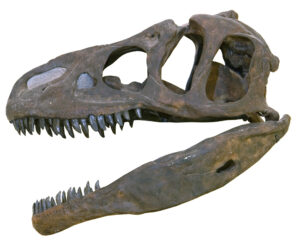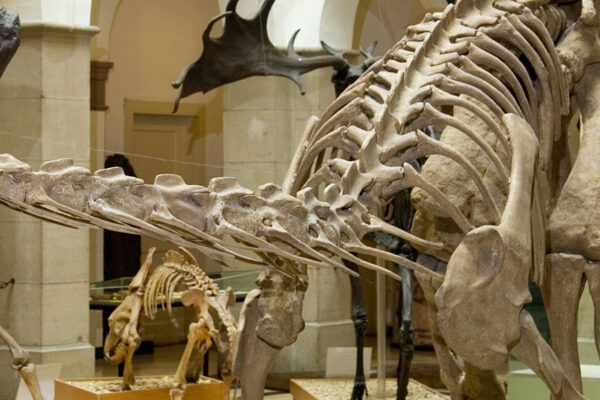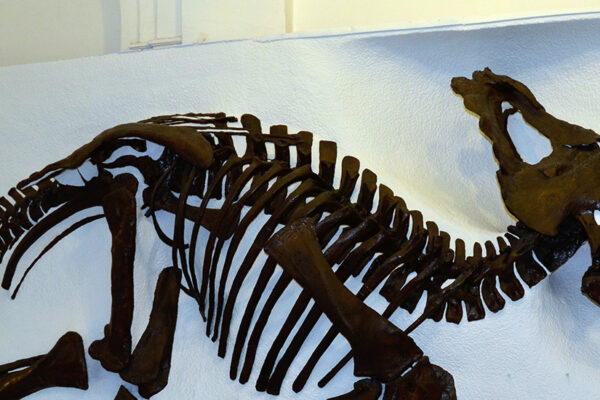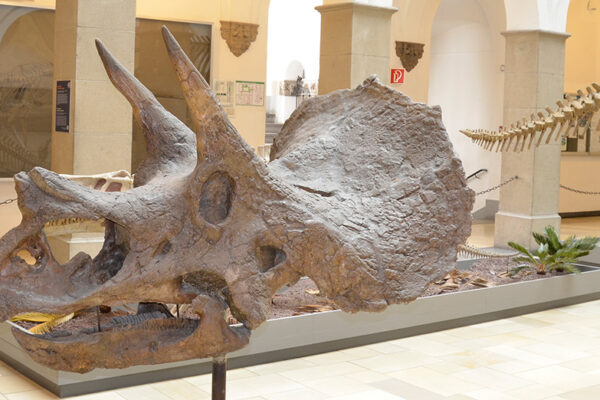Predatory Dinosaur Skull
Allosaurus fragilis
Morrison-Formation, Late Jurassic: Tithonium, approx. 150 Mio. years old Cleveland-Lloyd Quarry, Emery County, Utah, USA
Allosaurus was one of the largest predatory dinosaurs (theropods) of the late Jurassic period; the genus could reach lengths of up to 10 m, the skull cast exhibited here represents an animal about 7-8 m long. Like most predatory dinosaurs, Allosaurus moved bipedally on its powerful hind legs, while its short but equally powerful arms with a three-fingered hand equipped with large claws were probably mainly used to hold prey. Allosaurus is by far the most common predatory dinosaur in the upper Jurassic of North America, but also occurred on the Iberian Peninsula in Europe.
SNSB-BSPG 1964 I 307
Cast







